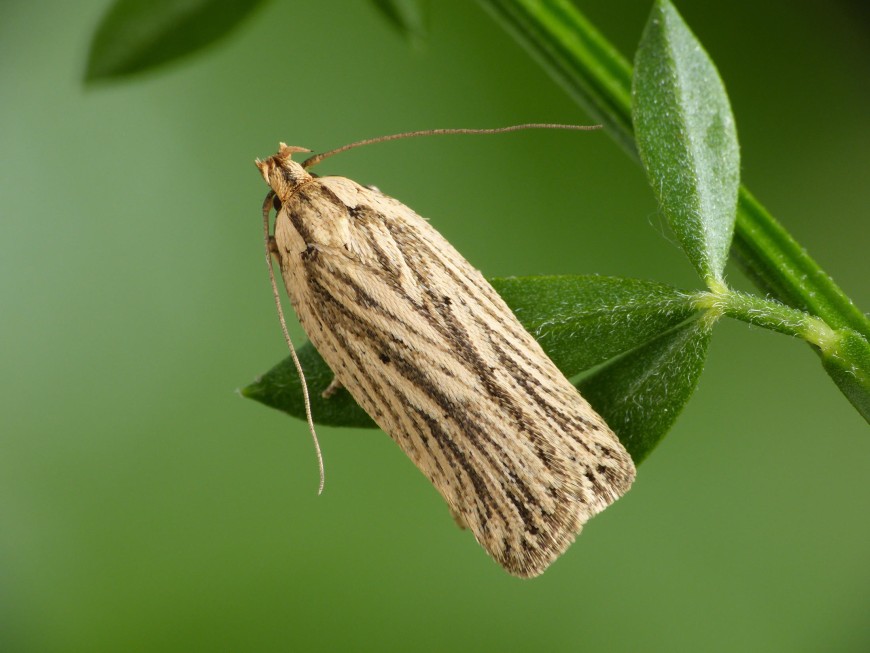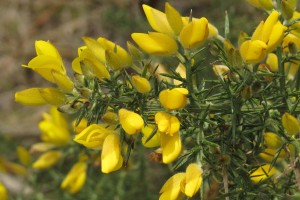Gorse soft shoot moth
History in New Zealand
The gorse soft shoot moth is native to western Europe and was first imported from the UK by the DSIR in 1983. The moth was not released at this time because of concerns about its host specificity. The moth was released in Hawai’i where it did well and quickly built-up damaging populations. Field trials in Hawai’i also showed that the moth was safe to release in New Zealand, so a second shipment was imported in 1990. The moth was subsequently mass-reared and released throughout the country in the early 1990s. The moth is now well established and common in many parts of the South Island but is still rare in the North Island. The moth has also been released as a biocontrol agent in Chile and Australia.
How would I find/recognise it and what is its lifecycle?
You are unlikely to see the adult moths as they are nocturnal and hide away down inside gorse bushes. You can flush them out during the day using a bee smoker. The moths are light brown with darker brown markings on the wings and are about 12 mm long. The females lay tiny pale yellow, barrel-shaped eggs singly at the base of spines next to developing buds in early spring. In the laboratory, females have been known to lay up to 250 eggs over a 53-day period.
The caterpillars hatch about 1–2 weeks later and move to the new growing buds, where they spin silken tubes and feed on new shoots. If you examine webbed or deformed shoot tips in late November/early December, you may be able to see the caterpillars inside – they wriggle rapidly when disturbed. Small caterpillars are dark brown (with black heads) but later turn greyish-green. You may confuse them with leafroller caterpillars, which are commonly found on gorse. Leafroller caterpillars are generally brighter green and smaller than soft shoot moth caterpillars, which grow up to 2 cm long.
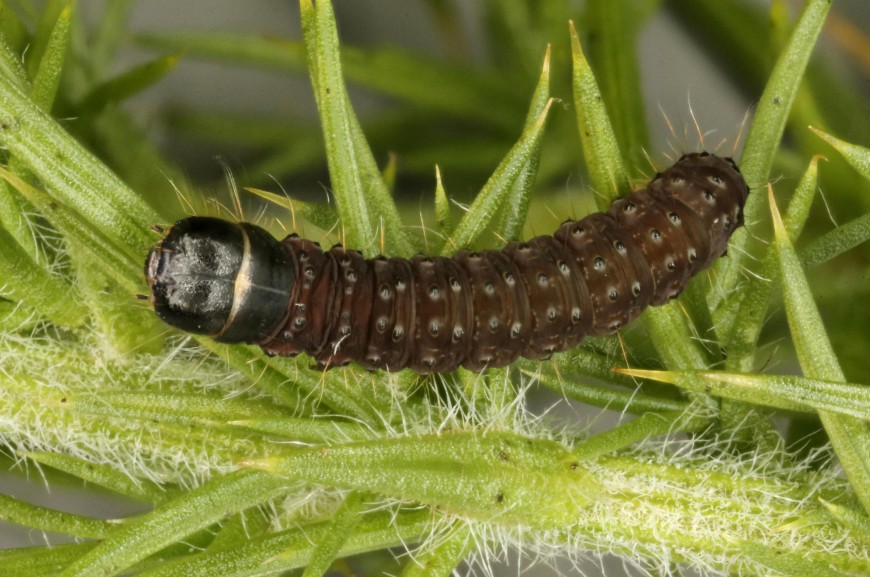
Image: soft shoot moth caterpillar. Photo credit: Janet Graham CC BY 2.0 via Wikimedia Commons.
Image: soft shoot moth caterpillar.
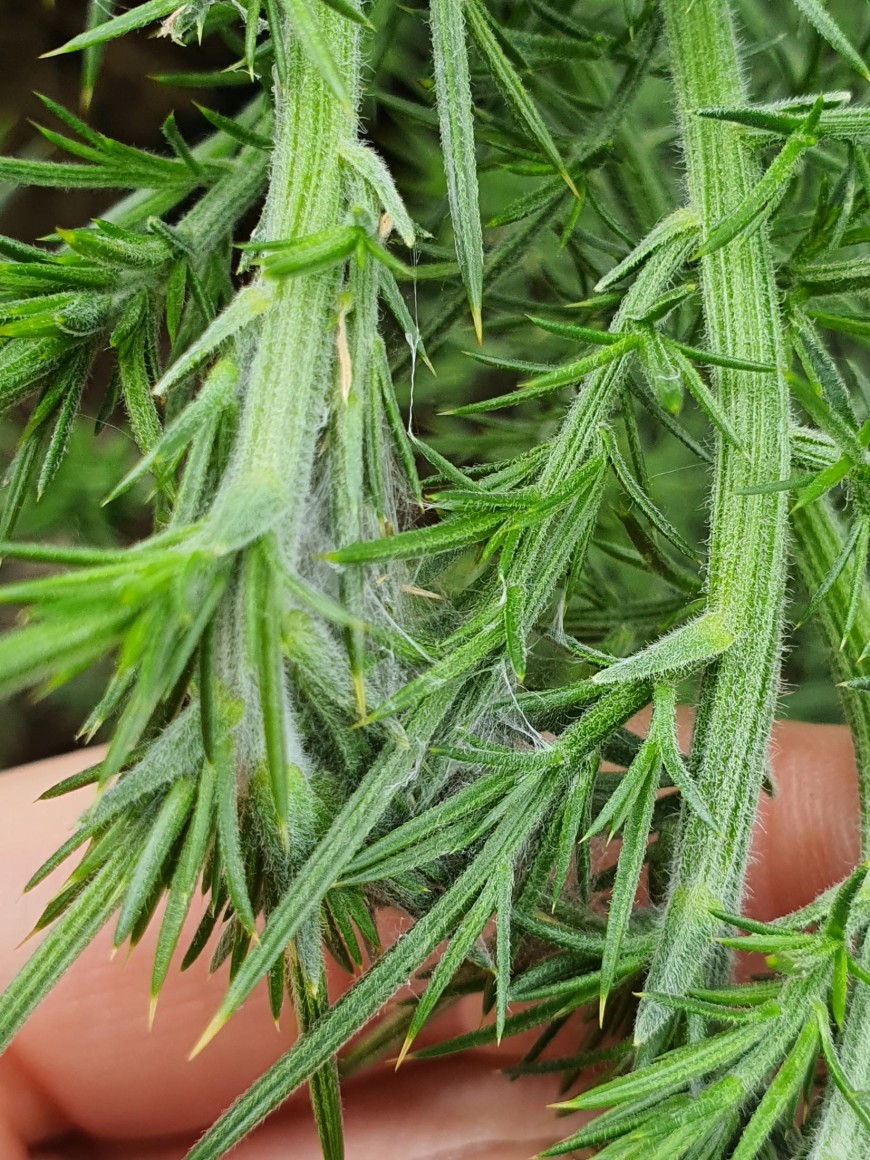
Image: gorse soft shoot moth caterpillar web.
After feeding for about 5–6 weeks the caterpillars pupate. You can sometimes see the dark reddish-brown pupae in the webbed tips but they often fall to the ground. Be careful not to confuse them with the paler-brown leaf roller pupae. New adult moths emerge about a month later and are believed to hibernate at the base of gorse bushes before emerging to mate the following spring. The moths are strong fliers and should be able to disperse readily. There is only one generation per year.
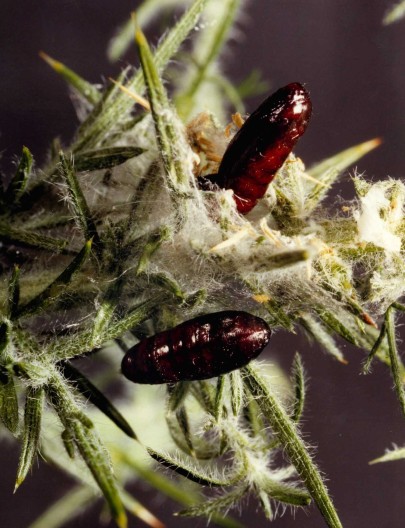
Image: gorse soft shoot moth pupae.
The gorse soft shoot moth is easy to differentiate from other gorse biocontrol agents. A key difference to the colonial hard shoot moth is that the soft shoot moth has only one larva per web.
See Gorse colonial hard shoot moth, Gorse pod moth, Gorse seed weevil, Gorse spider mite, Gorse thrips.
How does it damage gorse?
The caterpillars are the damaging stage, and they feed on the newly growing buds and soft tips in the spring. Each caterpillar can destroy up to five shoots.
Will it attack other plants?
No, it is extremely unlikely that gorse soft shoot moths will attack any plants other than gorse. In Europe it attacks other Ulex species that we do not have in New Zealand. A similar moth has been released here to attack broom (Agonopterix assimilella).
How effective is it?
No studies of the impact of gorse soft shoot moth have been undertaken in New Zealand. Where outbreaks have occurred the damage to gorse has been noticeable, but the overall effect on plant growth is unknown.
How can I get the most out of it?
If the moth is not present in an area where it is needed it could be collected from an area where it is well established and shifted during late spring.
How do I select a release site?
Read Guidelines for selecting release sites for biocontrol agents.
How do I collect it for release at other sites?
Harvest branches with webs on them or whole bushes in late spring when large caterpillars and/or pupae are present. Shift as many caterpillars as possible, preferably thousands of caterpillars to each new site. Wedge the infested material firmly into gorse bushes.
How do I manage the release sites?
Avoid any activities that will interfere with the moths, such as herbicide application. If you need to undertake control measures avoid the release site.
Key contact


